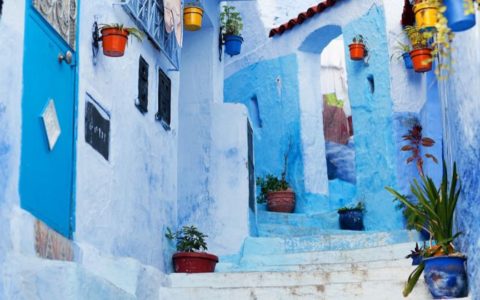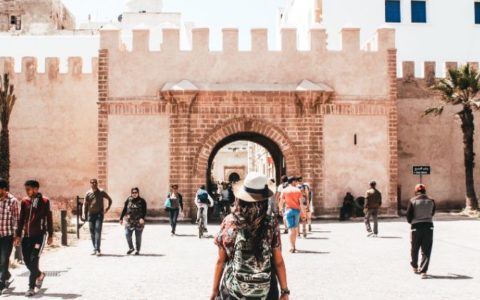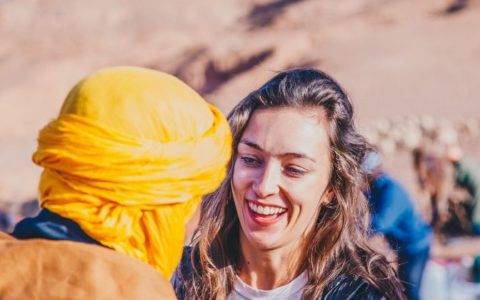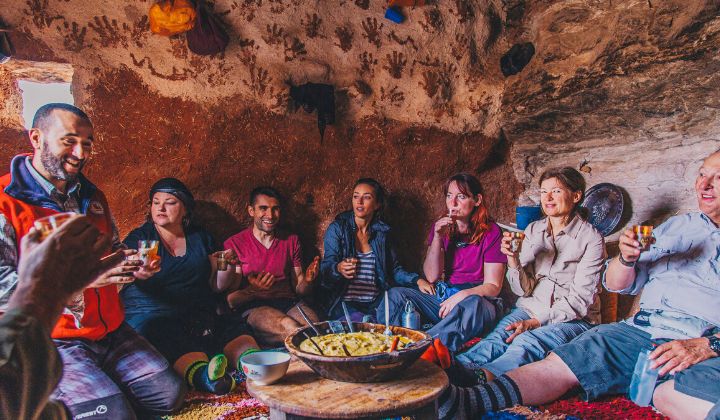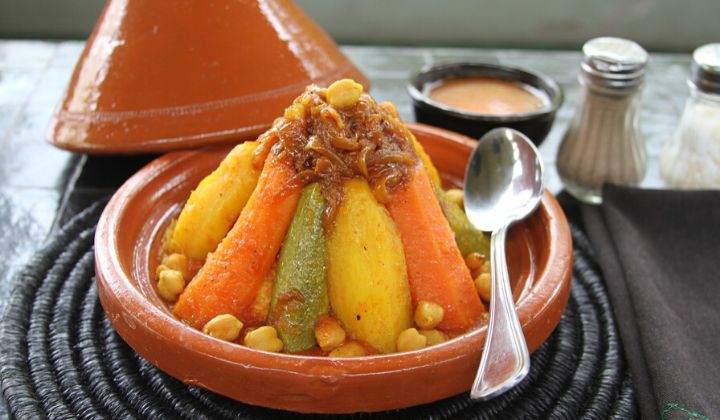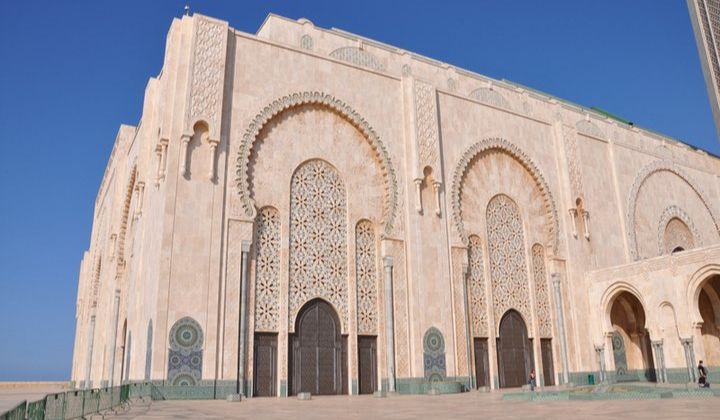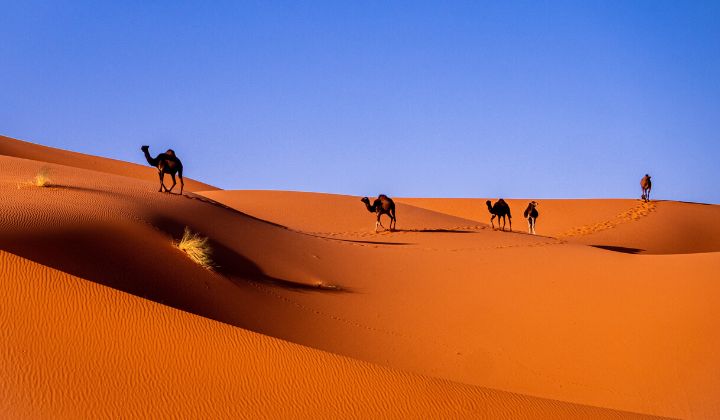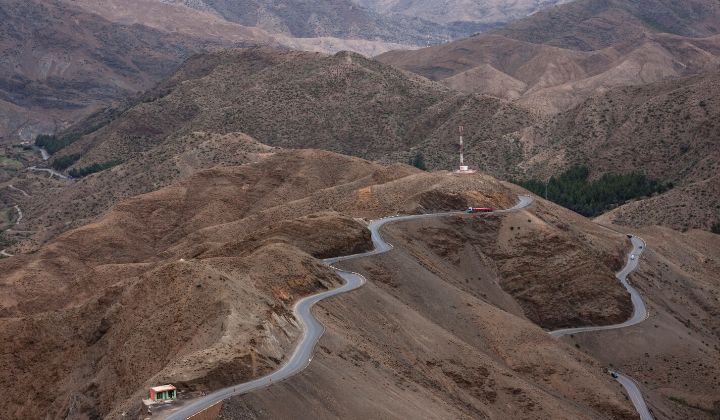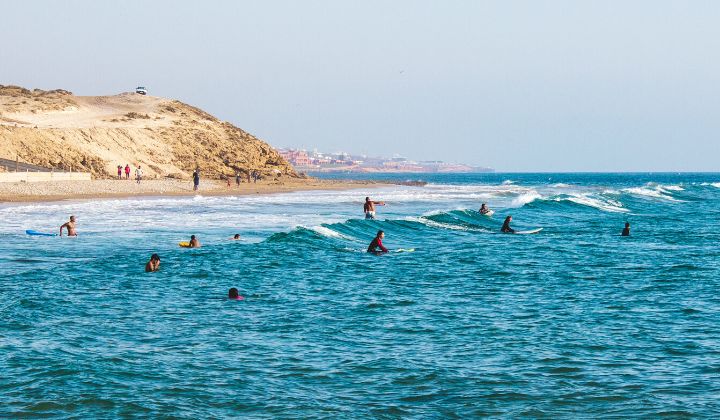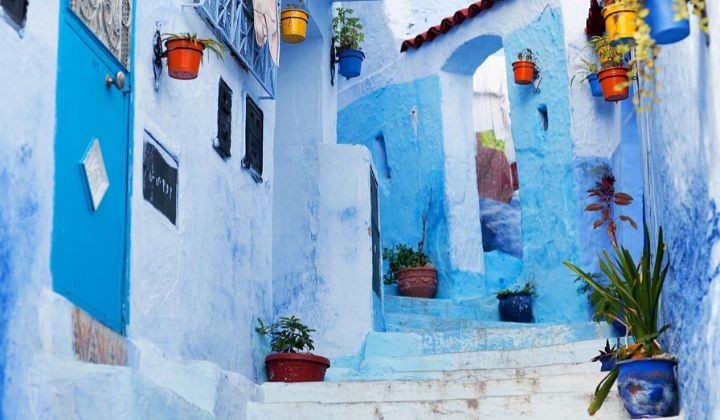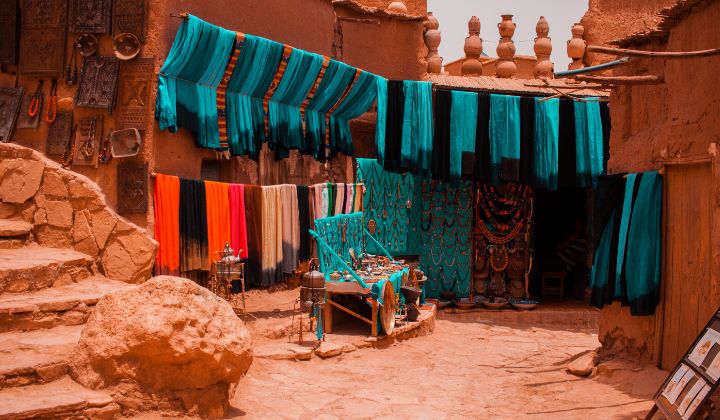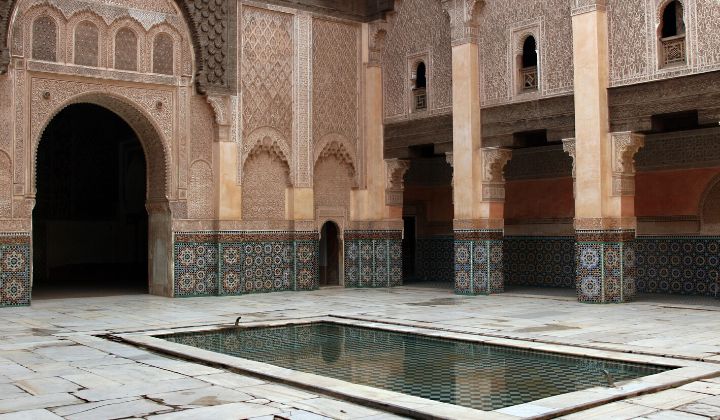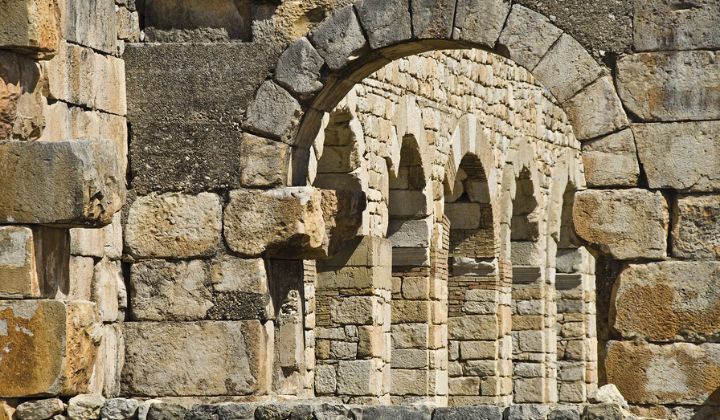Highlights of Morocco
| Tour start → end dates | Price | Enquire |
|---|---|---|
| 27 Apr 2024 → 13 May 2024 |
From R33790 |
Check Availability |
| 28 Apr 2024 → 14 May 2024 |
From R33460 |
Check Availability |
| 04 May 2024 → 20 May 2024 |
From R33460 |
Check Availability |
| 06 May 2024 → 22 May 2024 |
From R34120 |
Check Availability |
| 07 May 2024 → 23 May 2024 |
From R35765 |
Check Availability |
| 09 May 2024 → 25 May 2024 |
From R33460 |
Check Availability |
| 14 May 2024 → 30 May 2024 |
From R33175 |
Check Availability |
| 23 May 2024 → 08 Jun 2024 |
From R32855 |
Check Availability |
| 25 May 2024 → 10 Jun 2024 |
From R32540 |
Check Availability |
| 27 May 2024 → 12 Jun 2024 |
From R31905 |
Check Availability |
| 28 May 2024 → 13 Jun 2024 |
From R31905 |
Check Availability |
| 01 Jun 2024 → 17 Jun 2024 |
From R32855 |
Check Availability |
| 04 Jun 2024 → 20 Jun 2024 |
From R31905 |
Check Availability |
| 11 Jun 2024 → 27 Jun 2024 |
From R32855 |
Check Availability |
| 13 Jun 2024 → 29 Jun 2024 |
From R31905 |
Check Availability |
| 17 Jun 2024 → 03 Jul 2024 |
From R32220 |
Check Availability |
| 18 Jun 2024 → 04 Jul 2024 |
From R31905 |
Check Availability |
| 22 Jun 2024 → 08 Jul 2024 |
From R32220 |
Check Availability |
| 25 Jun 2024 → 11 Jul 2024 |
From R31905 |
Check Availability |
| 27 Jun 2024 → 13 Jul 2024 |
From R32220 |
Check Availability |
| 06 Jul 2024 → 22 Jul 2024 |
From R30675 |
Check Availability |
| 11 Jul 2024 → 27 Jul 2024 |
From R30980 |
Check Availability |
| 21 Jul 2024 → 06 Aug 2024 |
From R30675 |
Check Availability |
| 25 Jul 2024 → 10 Aug 2024 |
From R30980 |
Check Availability |
| 01 Aug 2024 → 17 Aug 2024 |
From R30980 |
Check Availability |
| 03 Aug 2024 → 19 Aug 2024 |
From R30675 |
Check Availability |
| 06 Aug 2024 → 22 Aug 2024 |
From R30675 |
Check Availability |
| 10 Aug 2024 → 26 Aug 2024 |
From R30675 |
Check Availability |
| 15 Aug 2024 → 31 Aug 2024 |
From R30980 |
Check Availability |
| 20 Aug 2024 → 05 Sep 2024 |
From R32220 |
Check Availability |
| 31 Aug 2024 → 16 Sep 2024 |
From R31905 |
Check Availability |
| 02 Sep 2024 → 18 Sep 2024 |
From R32540 |
Check Availability |
| 03 Sep 2024 → 19 Sep 2024 |
From R32220 |
Check Availability |
| 04 Sep 2024 → 20 Sep 2024 |
From R31905 |
Check Availability |
| 05 Sep 2024 → 21 Sep 2024 |
From R31905 |
Check Availability |
| 06 Sep 2024 → 22 Sep 2024 |
From R31905 |
Check Availability |
| 07 Sep 2024 → 23 Sep 2024 |
From R31905 |
Check Availability |
| 08 Sep 2024 → 24 Sep 2024 |
From R32220 |
Check Availability |
| 09 Sep 2024 → 25 Sep 2024 |
From R33460 |
Check Availability |
| 10 Sep 2024 → 26 Sep 2024 |
From R33130 |
Check Availability |
| 11 Sep 2024 → 27 Sep 2024 |
From R33460 |
Check Availability |
| 15 Sep 2024 → 01 Oct 2024 |
From R33460 |
Check Availability |
| 17 Sep 2024 → 03 Oct 2024 |
From R34120 |
Check Availability |
| 18 Sep 2024 → 04 Oct 2024 |
From R33130 |
Check Availability |
| 19 Sep 2024 → 05 Oct 2024 |
From R33130 |
Check Availability |
| 23 Sep 2024 → 09 Oct 2024 |
From R33460 |
Check Availability |
| 25 Sep 2024 → 11 Oct 2024 |
From R33460 |
Check Availability |
| 27 Sep 2024 → 13 Oct 2024 |
From R33790 |
Check Availability |
| 30 Sep 2024 → 16 Oct 2024 |
From R33130 |
Check Availability |
| 02 Oct 2024 → 18 Oct 2024 |
From R33130 |
Check Availability |
| 03 Oct 2024 → 19 Oct 2024 |
From R33130 |
Check Availability |
| 04 Oct 2024 → 20 Oct 2024 |
From R33460 |
Check Availability |
| 05 Oct 2024 → 21 Oct 2024 |
From R33460 |
Check Availability |
| 07 Oct 2024 → 23 Oct 2024 |
From R33130 |
Check Availability |
| 10 Oct 2024 → 26 Oct 2024 |
From R33130 |
Check Availability |
| 12 Oct 2024 → 28 Oct 2024 |
From R33460 |
Check Availability |
| 15 Oct 2024 → 31 Oct 2024 |
From R33130 |
Check Availability |
| 18 Oct 2024 → 03 Nov 2024 |
From R34780 |
Check Availability |
| 22 Oct 2024 → 07 Nov 2024 |
From R33130 |
Check Availability |
| 24 Oct 2024 → 09 Nov 2024 |
From R34780 |
Check Availability |
| 26 Oct 2024 → 11 Nov 2024 |
From R33130 |
Check Availability |
| 28 Oct 2024 → 13 Nov 2024 |
From R33130 |
Check Availability |
| 31 Oct 2024 → 16 Nov 2024 |
From R33130 |
Check Availability |
| 02 Nov 2024 → 18 Nov 2024 |
From R32220 |
Check Availability |
| 05 Nov 2024 → 21 Nov 2024 |
From R30675 |
Check Availability |
| 07 Nov 2024 → 23 Nov 2024 |
From R30675 |
Check Availability |
| 09 Nov 2024 → 25 Nov 2024 |
From R30980 |
Check Availability |
| 11 Nov 2024 → 27 Nov 2024 |
From R30675 |
Check Availability |
| 14 Nov 2024 → 30 Nov 2024 |
From R30675 |
Check Availability |
| 16 Nov 2024 → 02 Dec 2024 |
From R30675 |
Check Availability |
| 19 Nov 2024 → 05 Dec 2024 |
From R30675 |
Check Availability |
| 21 Nov 2024 → 07 Dec 2024 |
From R30675 |
Check Availability |
| 23 Nov 2024 → 09 Dec 2024 |
From R30980 |
Check Availability |
| 25 Nov 2024 → 11 Dec 2024 |
From R30675 |
Check Availability |
| 26 Nov 2024 → 12 Dec 2024 |
From R30675 |
Check Availability |
| 28 Nov 2024 → 14 Dec 2024 |
From R30675 |
Check Availability |
| 30 Nov 2024 → 16 Dec 2024 |
From R30675 |
Check Availability |
| 02 Dec 2024 → 18 Dec 2024 |
From R30675 |
Check Availability |
| 04 Dec 2024 → 20 Dec 2024 |
From R30675 |
Check Availability |
| 05 Dec 2024 → 21 Dec 2024 |
From R30675 |
Check Availability |
| 07 Dec 2024 → 23 Dec 2024 |
From R30675 |
Check Availability |
| 08 Dec 2024 → 24 Dec 2024 |
From R30675 |
Check Availability |
| 10 Dec 2024 → 26 Dec 2024 |
From R30675 |
Check Availability |
| 12 Dec 2024 → 28 Dec 2024 |
From R30675 |
Check Availability |
| 14 Dec 2024 → 30 Dec 2024 |
From R30675 |
Check Availability |
| 15 Dec 2024 → 31 Dec 2024 |
From R30675 |
Check Availability |
| 16 Dec 2024 → 01 Jan 2025 |
From R31905 |
Check Availability |
| 18 Dec 2024 → 03 Jan 2025 |
From R31905 |
Check Availability |
| 19 Dec 2024 → 04 Jan 2025 |
From R31905 |
Check Availability |
| 21 Dec 2024 → 06 Jan 2025 |
From R31905 |
Check Availability |
| 22 Dec 2024 → 07 Jan 2025 |
From R31905 |
Check Availability |
| 24 Dec 2024 → 09 Jan 2025 |
From R31905 |
Check Availability |
| 26 Dec 2024 → 11 Jan 2025 |
From R30525 |
Check Availability |
| 28 Dec 2024 → 13 Jan 2025 |
From R30525 |
Check Availability |
| 02 Jan 2025 → 18 Jan 2025 |
From R32205 |
Check Availability |
| 04 Jan 2025 → 20 Jan 2025 |
From R32205 |
Check Availability |
| 09 Jan 2025 → 25 Jan 2025 |
From R32205 |
Check Availability |
| 11 Jan 2025 → 27 Jan 2025 |
From R32205 |
Check Availability |
| 16 Jan 2025 → 01 Feb 2025 |
From R32205 |
Check Availability |
| 18 Jan 2025 → 03 Feb 2025 |
From R32205 |
Check Availability |
| 23 Jan 2025 → 08 Feb 2025 |
From R32205 |
Check Availability |
| 25 Jan 2025 → 10 Feb 2025 |
From R32205 |
Check Availability |
| 30 Jan 2025 → 15 Feb 2025 |
From R32205 |
Check Availability |
| 01 Feb 2025 → 17 Feb 2025 |
From R32205 |
Check Availability |
| 04 Feb 2025 → 20 Feb 2025 |
From R32205 |
Check Availability |
| 06 Feb 2025 → 22 Feb 2025 |
From R32205 |
Check Availability |
| 08 Feb 2025 → 24 Feb 2025 |
From R32205 |
Check Availability |
| 13 Feb 2025 → 01 Mar 2025 |
From R32205 |
Check Availability |
| 15 Feb 2025 → 03 Mar 2025 |
From R32205 |
Check Availability |
| 18 Feb 2025 → 06 Mar 2025 |
From R32205 |
Check Availability |
| 20 Feb 2025 → 08 Mar 2025 |
From R32205 |
Check Availability |
| 25 Feb 2025 → 13 Mar 2025 |
From R32205 |
Check Availability |
| 27 Feb 2025 → 15 Mar 2025 |
From R32205 |
Check Availability |
| 01 Mar 2025 → 17 Mar 2025 |
From R33490 |
Check Availability |
| 04 Mar 2025 → 20 Mar 2025 |
From R33490 |
Check Availability |
| 06 Mar 2025 → 22 Mar 2025 |
From R33490 |
Check Availability |
| 08 Mar 2025 → 24 Mar 2025 |
From R33490 |
Check Availability |
| 11 Mar 2025 → 27 Mar 2025 |
From R33490 |
Check Availability |
| 13 Mar 2025 → 29 Mar 2025 |
From R33490 |
Check Availability |
| 15 Mar 2025 → 31 Mar 2025 |
From R33490 |
Check Availability |
| 18 Mar 2025 → 03 Apr 2025 |
From R33490 |
Check Availability |
| 20 Mar 2025 → 05 Apr 2025 |
From R33490 |
Check Availability |
| 22 Mar 2025 → 07 Apr 2025 |
From R33490 |
Check Availability |
| 27 Mar 2025 → 12 Apr 2025 |
From R33490 |
Check Availability |
| 29 Mar 2025 → 14 Apr 2025 |
From R33490 |
Check Availability |
| 31 Mar 2025 → 16 Apr 2025 |
From R33490 |
Check Availability |
| 01 Apr 2025 → 17 Apr 2025 |
From R33490 |
Check Availability |
| 03 Apr 2025 → 19 Apr 2025 |
From R33490 |
Check Availability |
| 04 Apr 2025 → 20 Apr 2025 |
From R33490 |
Check Availability |
| 05 Apr 2025 → 21 Apr 2025 |
From R34780 |
Check Availability |
| 06 Apr 2025 → 22 Apr 2025 |
From R34780 |
Check Availability |
| 07 Apr 2025 → 23 Apr 2025 |
From R34780 |
Check Availability |
| 08 Apr 2025 → 24 Apr 2025 |
From R34780 |
Check Availability |
| 10 Apr 2025 → 26 Apr 2025 |
From R34780 |
Check Availability |
| 11 Apr 2025 → 27 Apr 2025 |
From R34780 |
Check Availability |
| 12 Apr 2025 → 28 Apr 2025 |
From R34780 |
Check Availability |
| 13 Apr 2025 → 29 Apr 2025 |
From R34780 |
Check Availability |
| 14 Apr 2025 → 30 Apr 2025 |
From R34780 |
Check Availability |
| 15 Apr 2025 → 01 May 2025 |
From R34780 |
Check Availability |
| 17 Apr 2025 → 03 May 2025 |
From R34780 |
Check Availability |
| 18 Apr 2025 → 04 May 2025 |
From R34780 |
Check Availability |
| 19 Apr 2025 → 05 May 2025 |
From R34780 |
Check Availability |
| 20 Apr 2025 → 06 May 2025 |
From R34780 |
Check Availability |
| 21 Apr 2025 → 07 May 2025 |
From R34780 |
Check Availability |
| 22 Apr 2025 → 08 May 2025 |
From R34780 |
Check Availability |
| 24 Apr 2025 → 10 May 2025 |
From R34780 |
Check Availability |
| 26 Apr 2025 → 12 May 2025 |
From R34780 |
Check Availability |
| 27 Apr 2025 → 13 May 2025 |
From R34780 |
Check Availability |
| 29 Apr 2025 → 15 May 2025 |
From R33490 |
Check Availability |
| 01 May 2025 → 17 May 2025 |
From R33490 |
Check Availability |
| 03 May 2025 → 19 May 2025 |
From R33490 |
Check Availability |
| 04 May 2025 → 20 May 2025 |
From R33490 |
Check Availability |
| 06 May 2025 → 22 May 2025 |
From R33490 |
Check Availability |
| 08 May 2025 → 24 May 2025 |
From R33490 |
Check Availability |
| 10 May 2025 → 26 May 2025 |
From R33490 |
Check Availability |
| 11 May 2025 → 27 May 2025 |
From R33490 |
Check Availability |
| 13 May 2025 → 29 May 2025 |
From R33490 |
Check Availability |
| 15 May 2025 → 31 May 2025 |
From R33490 |
Check Availability |
| 17 May 2025 → 02 Jun 2025 |
From R33490 |
Check Availability |
| 18 May 2025 → 03 Jun 2025 |
From R33490 |
Check Availability |
| 20 May 2025 → 05 Jun 2025 |
From R33490 |
Check Availability |
| 22 May 2025 → 07 Jun 2025 |
From R33490 |
Check Availability |
| 24 May 2025 → 09 Jun 2025 |
From R33490 |
Check Availability |
| 25 May 2025 → 10 Jun 2025 |
From R33490 |
Check Availability |
| 27 May 2025 → 12 Jun 2025 |
From R33490 |
Check Availability |
| 29 May 2025 → 14 Jun 2025 |
From R33490 |
Check Availability |
| 31 May 2025 → 16 Jun 2025 |
From R33490 |
Check Availability |
| 01 Jun 2025 → 17 Jun 2025 |
From R32205 |
Check Availability |
| 03 Jun 2025 → 19 Jun 2025 |
From R32205 |
Check Availability |
| 05 Jun 2025 → 21 Jun 2025 |
From R32205 |
Check Availability |
| 07 Jun 2025 → 23 Jun 2025 |
From R32205 |
Check Availability |
| 08 Jun 2025 → 24 Jun 2025 |
From R32205 |
Check Availability |
| 10 Jun 2025 → 26 Jun 2025 |
From R32205 |
Check Availability |
| 12 Jun 2025 → 28 Jun 2025 |
From R32205 |
Check Availability |
| 14 Jun 2025 → 30 Jun 2025 |
From R32205 |
Check Availability |
| 17 Jun 2025 → 03 Jul 2025 |
From R32205 |
Check Availability |
| 19 Jun 2025 → 05 Jul 2025 |
From R32205 |
Check Availability |
| 21 Jun 2025 → 07 Jul 2025 |
From R32205 |
Check Availability |
| 22 Jun 2025 → 08 Jul 2025 |
From R32205 |
Check Availability |
| 24 Jun 2025 → 10 Jul 2025 |
From R32205 |
Check Availability |
| 26 Jun 2025 → 12 Jul 2025 |
From R32205 |
Check Availability |
| 28 Jun 2025 → 14 Jul 2025 |
From R32205 |
Check Availability |
| 01 Jul 2025 → 17 Jul 2025 |
From R32205 |
Check Availability |
| 03 Jul 2025 → 19 Jul 2025 |
From R32205 |
Check Availability |
| 05 Jul 2025 → 21 Jul 2025 |
From R32205 |
Check Availability |
| 10 Jul 2025 → 26 Jul 2025 |
From R32205 |
Check Availability |
| 12 Jul 2025 → 28 Jul 2025 |
From R32205 |
Check Availability |
| 15 Jul 2025 → 31 Jul 2025 |
From R32205 |
Check Availability |
| 15 Jul 2025 → 31 Jul 2025 |
From R32205 |
Check Availability |
| 17 Jul 2025 → 02 Aug 2025 |
From R32205 |
Check Availability |
| 19 Jul 2025 → 04 Aug 2025 |
From R32205 |
Check Availability |
| 24 Jul 2025 → 09 Aug 2025 |
From R32205 |
Check Availability |
| 26 Jul 2025 → 11 Aug 2025 |
From R32205 |
Check Availability |
| 29 Jul 2025 → 14 Aug 2025 |
From R32205 |
Check Availability |
| 31 Jul 2025 → 16 Aug 2025 |
From R32205 |
Check Availability |
| 05 Aug 2025 → 21 Aug 2025 |
From R32205 |
Check Availability |
| 07 Aug 2025 → 23 Aug 2025 |
From R32205 |
Check Availability |
| 09 Aug 2025 → 25 Aug 2025 |
From R32205 |
Check Availability |
| 12 Aug 2025 → 28 Aug 2025 |
From R32205 |
Check Availability |
| 14 Aug 2025 → 30 Aug 2025 |
From R32205 |
Check Availability |
| 16 Aug 2025 → 01 Sep 2025 |
From R32205 |
Check Availability |
| 19 Aug 2025 → 04 Sep 2025 |
From R33490 |
Check Availability |
| 21 Aug 2025 → 06 Sep 2025 |
From R33490 |
Check Availability |
| 23 Aug 2025 → 08 Sep 2025 |
From R33490 |
Check Availability |
| 26 Aug 2025 → 11 Sep 2025 |
From R33490 |
Check Availability |
| 28 Aug 2025 → 13 Sep 2025 |
From R33490 |
Check Availability |
| 30 Aug 2025 → 15 Sep 2025 |
From R33490 |
Check Availability |
| 01 Sep 2025 → 17 Sep 2025 |
From R34780 |
Check Availability |
| 02 Sep 2025 → 18 Sep 2025 |
From R34780 |
Check Availability |
| 03 Sep 2025 → 19 Sep 2025 |
From R34780 |
Check Availability |
| 04 Sep 2025 → 20 Sep 2025 |
From R34780 |
Check Availability |
| 05 Sep 2025 → 21 Sep 2025 |
From R34780 |
Check Availability |
| 06 Sep 2025 → 22 Sep 2025 |
From R34780 |
Check Availability |
| 07 Sep 2025 → 23 Sep 2025 |
From R34780 |
Check Availability |
| 08 Sep 2025 → 24 Sep 2025 |
From R34780 |
Check Availability |
| 09 Sep 2025 → 25 Sep 2025 |
From R34780 |
Check Availability |
| 10 Sep 2025 → 26 Sep 2025 |
From R34780 |
Check Availability |
| 11 Sep 2025 → 27 Sep 2025 |
From R34780 |
Check Availability |
| 12 Sep 2025 → 28 Sep 2025 |
From R34780 |
Check Availability |
| 13 Sep 2025 → 29 Sep 2025 |
From R34780 |
Check Availability |
| 14 Sep 2025 → 30 Sep 2025 |
From R34780 |
Check Availability |
| 15 Sep 2025 → 01 Oct 2025 |
From R34780 |
Check Availability |
| 16 Sep 2025 → 02 Oct 2025 |
From R34780 |
Check Availability |
| 17 Sep 2025 → 03 Oct 2025 |
From R34780 |
Check Availability |
| 18 Sep 2025 → 04 Oct 2025 |
From R34780 |
Check Availability |
| 19 Sep 2025 → 05 Oct 2025 |
From R34780 |
Check Availability |
| 20 Sep 2025 → 06 Oct 2025 |
From R34780 |
Check Availability |
| 21 Sep 2025 → 07 Oct 2025 |
From R34780 |
Check Availability |
| 22 Sep 2025 → 08 Oct 2025 |
From R34780 |
Check Availability |
| 23 Sep 2025 → 09 Oct 2025 |
From R34780 |
Check Availability |
| 25 Sep 2025 → 11 Oct 2025 |
From R34780 |
Check Availability |
| 26 Sep 2025 → 12 Oct 2025 |
From R34780 |
Check Availability |
| 27 Sep 2025 → 13 Oct 2025 |
From R34780 |
Check Availability |
| 28 Sep 2025 → 14 Oct 2025 |
From R34780 |
Check Availability |
| 29 Sep 2025 → 15 Oct 2025 |
From R34780 |
Check Availability |
| 30 Sep 2025 → 16 Oct 2025 |
From R34780 |
Check Availability |



